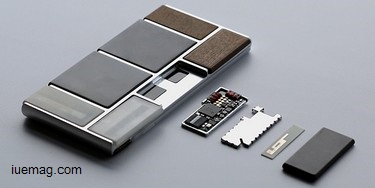

Era of Modular Smart Phones
Whenever we think of purchasing a laptop or a PC, we usually will go for customized systems where in we can choose the type of RAM, Memory of Hard Disk Drive, Motherboard, Graphics Card, etc. But, when it comes to mobile phones / smart phones, we are forced to purchase the product available in the market and cannot customize it according to our needs.
As an Android user, I always think about upgrading my phone's hardware. I want my smart phone to be as fast as my computer and should have a camera with better sensor. Just a 2GB of RAM and 32GB of ROM is not sufficient for me. I do want to use my smart phone with different hardwares designed by me. But, frankly speaking, none of the above can be customized in the smart phone I have now.
As an Android user, I always think about upgrading my phone's hardware. I want my smart phone to be as fast as my computer and should have a camera with better sensor. Just a 2GB of RAM and 32GB of ROM is not sufficient for me. I do want to use my smart phone with different hardwares designed by me. But, frankly speaking, none of the above can be customized in the smart phone I have now.

There are 'n' number of smartphone industries who want to get rid of this drawback in the present devices. But, Google's Advanced Technology and Projects group (ATAP) proposes Project Ara which is a development effort to create a modular hardware ecosystem rivaling mobile apps in the pace and level of innovation around smartphones, it aims to enable users to create a modular smartphone that is precisely tailored to their functional and aesthetic preferences.
It all starts with an endoskeleton, the structural frame and data backbone of the device. The user can populate the endoskeleton with “modules,” the building blocks that make up the vast majority of the phone’s functionality and features. The modules can be easily and safely inserted and removed at any time, even while the device is powered on. The modules also have user-replaceable covers or “shells,” which provide a creative canvas for users to make their phone look exactly as they wish. Ultimately, customers will be able to buy a complete Ara phone, configure one from scratch, or buy additional modules through the Ara Module Marketplace - Just like Google Play for apps.
Isn't this Amazing ?! I was completely Mezmerized seeing this project of Google. At the other end, I was also thinking about these issues.
It's a known fact that, every techno-innovation will lead to discovery of another technology and the cycle repeates. So, we will have to adjust for the Reality.
I am all Excited to explore this Gadget! Are you too? Reply with a comment below!
It all starts with an endoskeleton, the structural frame and data backbone of the device. The user can populate the endoskeleton with “modules,” the building blocks that make up the vast majority of the phone’s functionality and features. The modules can be easily and safely inserted and removed at any time, even while the device is powered on. The modules also have user-replaceable covers or “shells,” which provide a creative canvas for users to make their phone look exactly as they wish. Ultimately, customers will be able to buy a complete Ara phone, configure one from scratch, or buy additional modules through the Ara Module Marketplace - Just like Google Play for apps.
Isn't this Amazing ?! I was completely Mezmerized seeing this project of Google. At the other end, I was also thinking about these issues.
- Making a modular device is extremely difficult because modularity adds a new series of requirements and constraints.
- A modular device is a phone, tablet or other device where individual components such as the screen, camera, CPU, battery, memory can be removed by the user and replaced by others with a different specification.
- Each module requires an individual case and a connector. These take up space, making the resulting device bulkier and less sleek-looking than a normal device.
- Each swappable component has to remain distinct from all the others. Integrating components together is a tried and tested method of cost and size reduction meaning that a modular device has always been more expensive to make.
- Every swappable component has to be tested with every other in every possible configuration to ensure that they all work together properly. This means that testing and certification is much more onerous meaningfully increasing development costs."
It's a known fact that, every techno-innovation will lead to discovery of another technology and the cycle repeates. So, we will have to adjust for the Reality.
I am all Excited to explore this Gadget! Are you too? Reply with a comment below!
Copyrights © 2025 Inspiration Unlimited - iU - Online Global Positivity Media
Any facts, figures or references stated here are made by the author & don't reflect the endorsement of iU at all times unless otherwise drafted by official staff at iU. A part [small/large] could be AI generated content at times and it's inevitable today. If you have a feedback particularly with regards to that, feel free to let us know. This article was first published here on 25th August 2015.
Overthinking? Uninspired? Brain Fogged?
Let's Reset That! Try iU's Positivity Chat NOW!

All chats are end-to-end encrypted by WhatsApp and won't be shared anywhere [won't be stored either].


